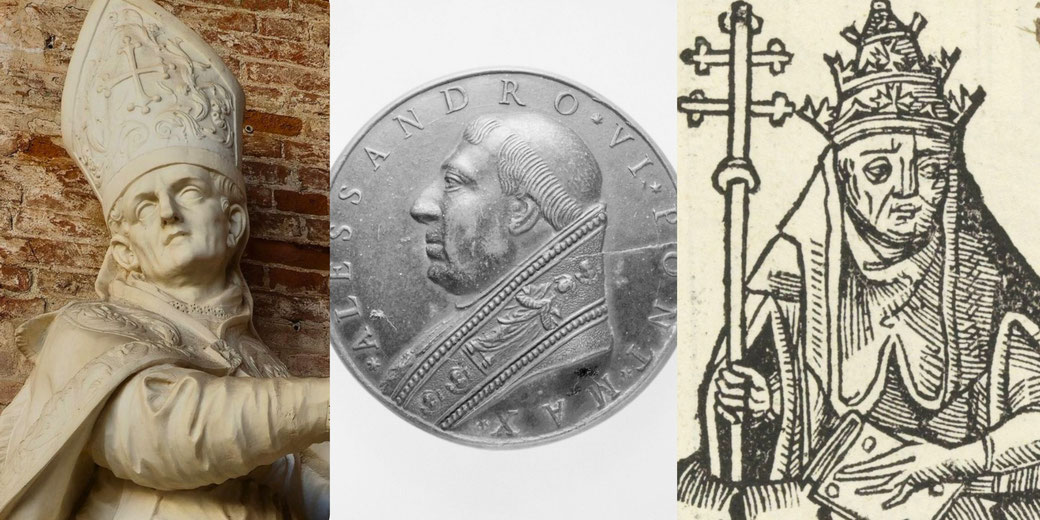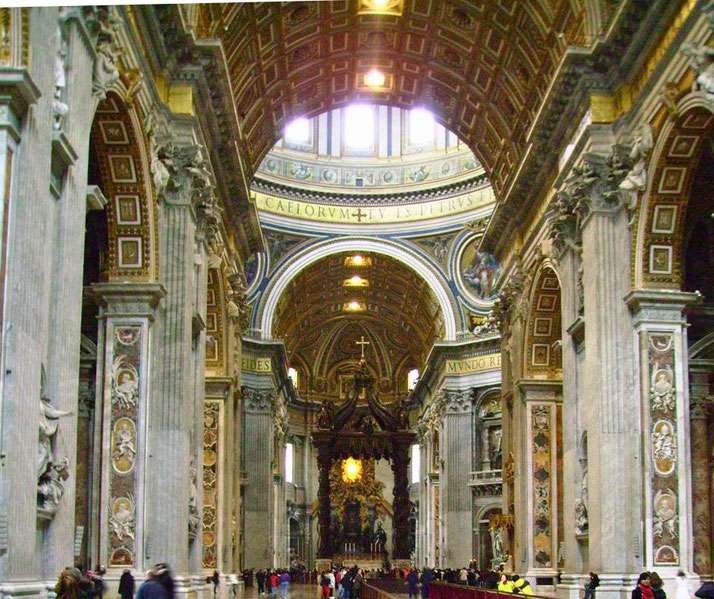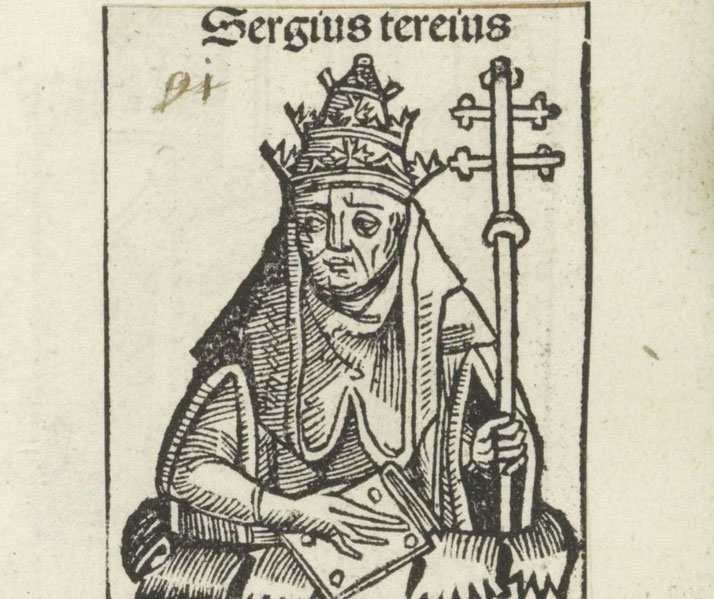The 7 worst popes in the history of the Catholic Church

The papacy has long been linked to spiritual guidance and moral leadership for millions of Catholics around the world.
Yet history records periods when the men who occupied the papal throne acted in ways that shocked contemporaries and stained the Church’s reputation.
Some popes were accused of greed, corruption, brutality, or scandalous personal behaviour, and accounts from chroniclers, official records, and later historians reveal how these figures caused divisions within the Church and eroded its moral authority.
Among them, seven stand out for their notorious conduct...
1. Pope Stephen VI
Pope Stephen VI reigned from May 896 to August 897, during a time of extreme political instability in Rome.
His papacy is remembered for the shocking Cadaver Synod, a trial held against the corpse of his predecessor, Pope Formosus.
Stephen ordered Formosus’s body to be exhumed, dressed in papal vestments, and propped on a throne for judgment, accusing the dead pope of perjury and of illegally assuming the papacy.
After a mock trial, the corpse was found guilty, stripped of its vestments, and maimed, with three fingers cut off.
The body was later thrown into the River Tiber.
Contemporary sources describe public outrage at the spectacle, which shocked almost everyone in the clergy and laity.
In reality, political factions within Rome had influenced Stephen’s decision, as they sought to nullify the ordinations performed by Formosus.
Riots erupted in the city soon after the trial, and Stephen was deposed and imprisoned.
He died by strangulation in prison, likely murdered by opponents, who had turned against him.

2. Pope Benedict IX
Pope Benedict IX, who reigned on three separate occasions between 1032 and 1048, is widely regarded as one of the most corrupt pontiffs in history.
He first became pope as a teenager, placed on the throne through the influence of his powerful family, the Tusculani.
Chroniclers described him as having a scandalous private life that combined immoral behaviour with violent excesses and acts of debauchery, although many of these accounts came from hostile sources.
His most infamous act occurred in 1045 when he sold the papacy to his godfather, the priest John Gratian, who thereby became Pope Gregory VI.
The exact circumstances of the sale are debated, yet contemporary writers reported that Benedict desired to marry and saw the sale as a way to secure wealth while leaving office.
After the sale, Benedict attempted to reclaim the papacy twice, and these attempts caused chaos and confusion in Rome.
The events of his papacy revealed the extent of corruption in the Church, which prompted reforms under later popes such as Leo IX and Gregory VII.

3. Pope Alexander VI
Pope Alexander VI, born Rodrigo Borgia, reigned from 1492 to 1503 and has come to represent the worst of the corruption of the Renaissance papacy.
As a member of the powerful Borgia family, he openly advanced the interests of his relatives by relying on nepotism, which granted them high positions in the Church and Italian politics.
Chroniclers hostile to Alexander described scandalous parties held in the Vatican, including the so-called Banquet of Chestnuts in 1501: although modern historians debate whether some vivid accounts of this event may have been exaggerated or made up.
Alexander fathered several illegitimate children, including Cesare and Lucrezia Borgia, whose exploits became legendary.
He used papal power to expand his family’s political control in Italy and sanctioned military campaigns led by Cesare to seize territories.
Many contemporaries viewed Alexander as more of a secular prince than a spiritual leader.
His actions contributed to widespread calls for Church reform and increased criticism that would soon fuel the Protestant Reformation.

4. Pope Leo X
Pope Leo X, was born Giovanni de’ Medici and reigned from 1513 to 1521. He became notorious for his lavish spending and poor money management.
A lavish patron of the arts, he commissioned grand projects in Rome and supported artists such as Raphael.
His spending drained the papal treasury, and he authorised a major indulgence campaign to raise funds.
The indulgence campaign that Luther criticised had already existed before Leo’s pontificate, yet his expansion of the practice became one of the immediate triggers of Martin Luther’s Ninety-Five Theses in 1517, which launched the Protestant Reformation.
Leo treated the papacy more as a means of worldly showiness than a source of spiritual leadership.
His contemporaries criticised his love of banquets, hunting, and theatrical entertainments.
By the time of his death in 1521, the Church faced unprecedented challenges as reformers denounced its corruption and excesses.
5. Pope Urban VI
Pope Urban VI reigned from 1378 to 1389 and became known for his violent temper and harsh behaviour.
His election triggered the Western Schism because many cardinals, who feared his personality, elected an antipope, Clement VII, which led to decades of division in the Church.
Urban alienated supporters through unpredictable outbursts and brutal punishments.
In 1385, he accused six cardinals of conspiring against him, had them tortured, and ordered their executions.
Ultimately, his cruelty and paranoia eroded confidence in his leadership.
Chroniclers recorded that even his allies feared him. The schism that began under his papacy lasted until 1417, when the Council of Constance finally restored unity to the Church.
6. Pope John XII
Pope John XII, who reigned from 955 to 964, was notorious for his immoral personal life.
He was elected pope at around eighteen years of age, largely due to his powerful father, Alberic II of Spoleto.
Contemporary accounts accused him of running the Lateran Palace as a brothel, committing adultery and other sexual sins, gambling, and even invoking pagan gods during dice games.
Many of these accusations came from sources hostile to John and it is difficult to know to what degree any of these accusations were based upon truth.
John’s political dealings were equally scandalous. In 962, he crowned Otto I as Holy Roman Emperor but soon conspired against him.
When Otto deposed him, John returned to Rome after the emperor left, and he resumed his immoral lifestyle.
He reportedly died in 964 after suffering a fatal stroke while engaged in adultery, a detail recorded gleefully by chroniclers hostile to his memory.
7. Pope Sergius III
Pope Sergius III reigned from 904 to 911, during a period historians call the Saeculum Obscurum, or “Dark Age” of the papacy (a period of weak papal authority).
He gained power through violent factional struggles in Rome, having previously been involved in the murder of Pope Leo V.
Sergius allied himself with the powerful Theophylact family, which dominated Rome during this era.
Chroniclers accused Sergius of fathering a son with Marozia, the daughter of Theophylact, who later became Pope John XI.
Modern historians debate whether Sergius was truly John XI’s father, but his papacy clearly strengthened the control of Rome’s aristocratic families over the Church.
Violence, nepotism, and moral corruption flourished under his rule, and the papacy became a pawn of competing Roman factions rather than a source of spiritual authority.

What do you need help with?
Download ready-to-use digital learning resources
Copyright © History Skills 2014-2025.
Contact via email
With the exception of links to external sites, some historical sources and extracts from specific publications, all content on this website is copyrighted by History Skills. This content may not be copied, republished or redistributed without written permission from the website creator. Please use the Contact page to obtain relevant permission.





